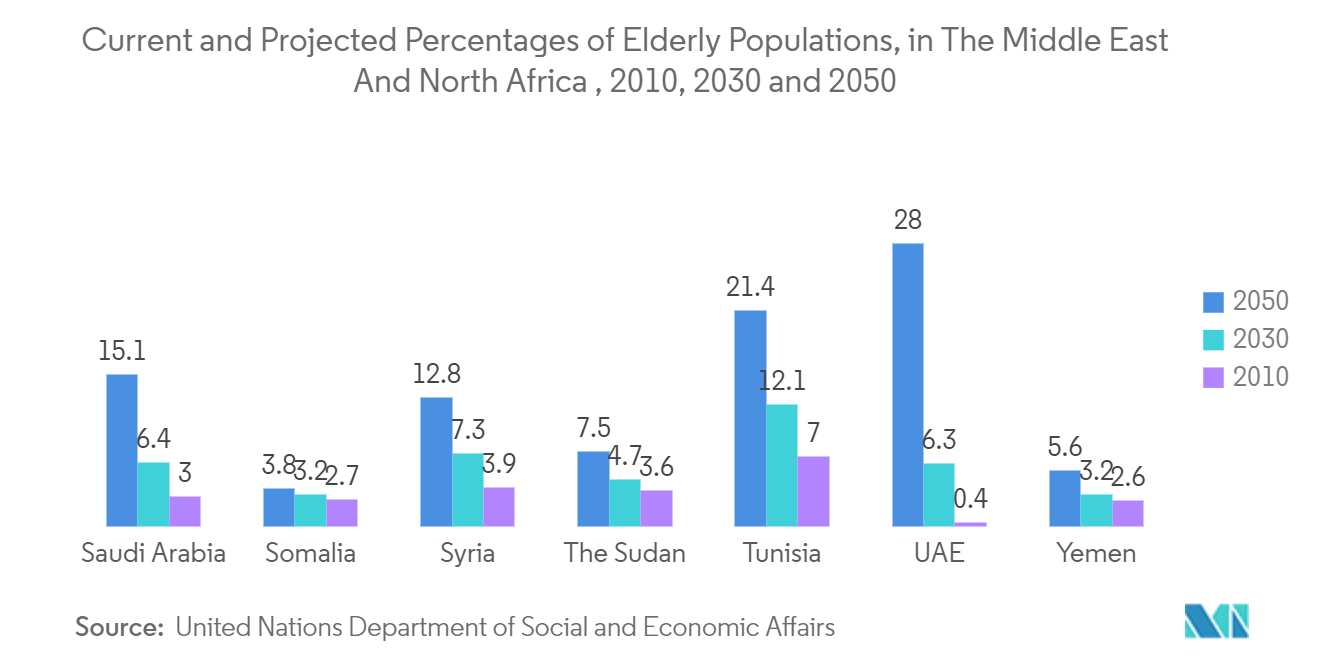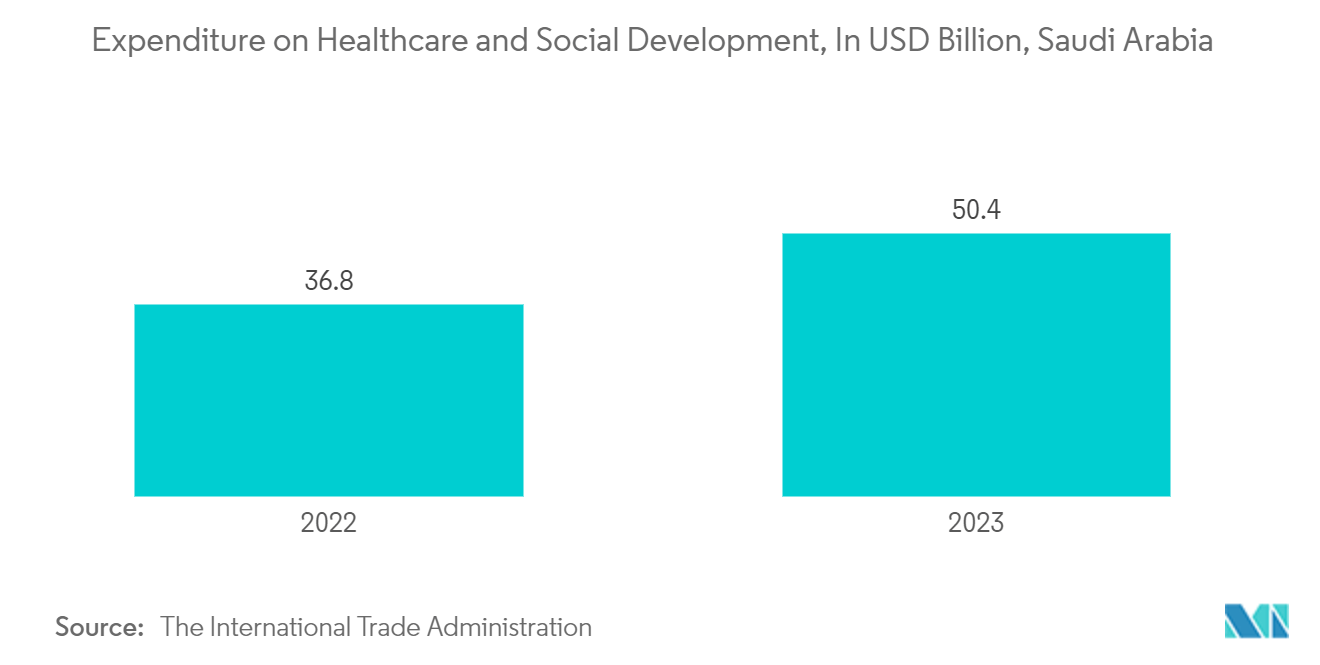Market Trends of MEA Medical Devices Packaging Industry
Increasing Demand for Sterile Packaging
- Sterilization is an important processing step in the medical device industry. Therefore, using sterile packaging products or barrier systems is becoming increasingly important in the industry. Sterile medical packaging is non-reusable and acts as a barrier against microbial infection. Using plastic and paper offers lightweight, recyclability, and durability advantages.
- The medical device industry is experiencing a growing need for packaging to safeguard products from environmental factors like moisture while in transit. Additionally, the rising investments in packaging technologies, including advanced equipment to enhance efficiency, are driving the demand for packaging solutions that guarantee the integrity and sterility of medical devices and pharmaceuticals.
- The pandemic has created avenues and advanced the creation of sterile and anti-microbial packaging options. The surge in demand for sterile medical packaging to prevent transmission was hastened by the pandemic. The rise in infectious diseases and viruses has resulted in a higher need for sterile medical packaging to avoid contamination, contributing to market growth.
- Stringent government regulations for surgical and medical appliance packaging to prioritize patient safety boost the demand for sterile packaging for this segment. Sterile packaging is crucial for surgical and medical appliances to protect patients and prevent transmission of germs or diseases during surgical procedures. According to data from the National Institute of Health, 1.7 million cases were caused by medical device-associated infection in 2023, which enhanced the demand for sterile packaging for medical appliances globally.
- The government focuses on improving the quality of healthcare services and has strategic plans to increase investment in the healthcare sector. The increasing demand for medicine-related products and medical devices has created a greater need for aseptic and sterile packaging. These packaging solutions are essential for the safe storage and transit of devices, as they help to reduce the risk of contamination. The region continues to invest in the healthcare sector, thus fueling the demand for medical device packaging in the projected timeframe.
- Additionally, according to the United Nations Department of Social and Economic Affairs, countries in the region will experience growth in the elderly population. The percentage of the population 65+ in Saudi Arabia will account for 15.1% by 2050, and in Tunisia and the United Arab Emirates, the elderly population will account for 21.4% and 28% by 2050. Such growth of the elderly population will propel the growth of medical care, eventually impacting the market growth.

Saudi Arabia is Expected to Register Significant Growth with the Increasing Production of Medical Devices
- The government in the country is planning to reduce the reliance on oil and gas revenues and develop other sectors to generate income, such as manufacturing and tourism. The Saudi Vision 2030 was initiated with the same vision of developing other sectors in the country. One of the initiatives of Saudi Vision 2030 includes enhancing the healthcare sector to advance patient care in the country.
- Additionally, the government focuses on localization by offering additional incentives such as customs duty exemption and deferred income tax for up to 10 years on raw materials, equipment, spare parts, and low water and electricity rates. It also offers an enhanced supply chain with opportunities to distribute and sell healthcare products within the country.
- The Ministry of Investment of Saudi Arabia (MISA) has identified two areas with high investment potential: pharmaceutical and medical devices. The Ministry of Investment of Saudi Arabia (MISA) noted that around 90% of the medical devices in the country are imported. Supporting local manufacturing would help the country reduce its dependence on foreign companies. This is expected to significantly impact the growth of medical device packaging manufacturers in the country.
- Medical device manufacturers are seeking to operate in Saudi Arabia to take advantage of the opportunities offered by the government in the country. For instance, in 2024, J&J MedTech KSA, a Johnson & Johnson Company technology firm, announced the launch of direct operations in Saudi Arabia. The company offers medical and surgical equipment, and its direct operation in the country helps contribute to Vision 2030 to support the development of the healthcare sector.
- According to the International Trade Administration, Saudi Arabia accounts for around 60% of the Gulf Cooperation Council (GCC) countries’ healthcare expenditure. In 2023, healthcare and social development spending accounts for approximately USD 50.4 billion compared to the previous year. Moreover, the medical device market in Saudi Arabia is growing at 10% annually. The strong growth in the medical device sector, with rising healthcare concerns among the Saudi population and increasing consumption of healthcare services, is anticipated to aid the development of the medical device packaging market.



